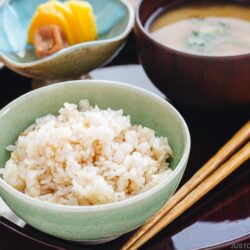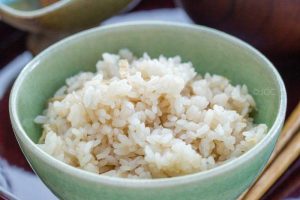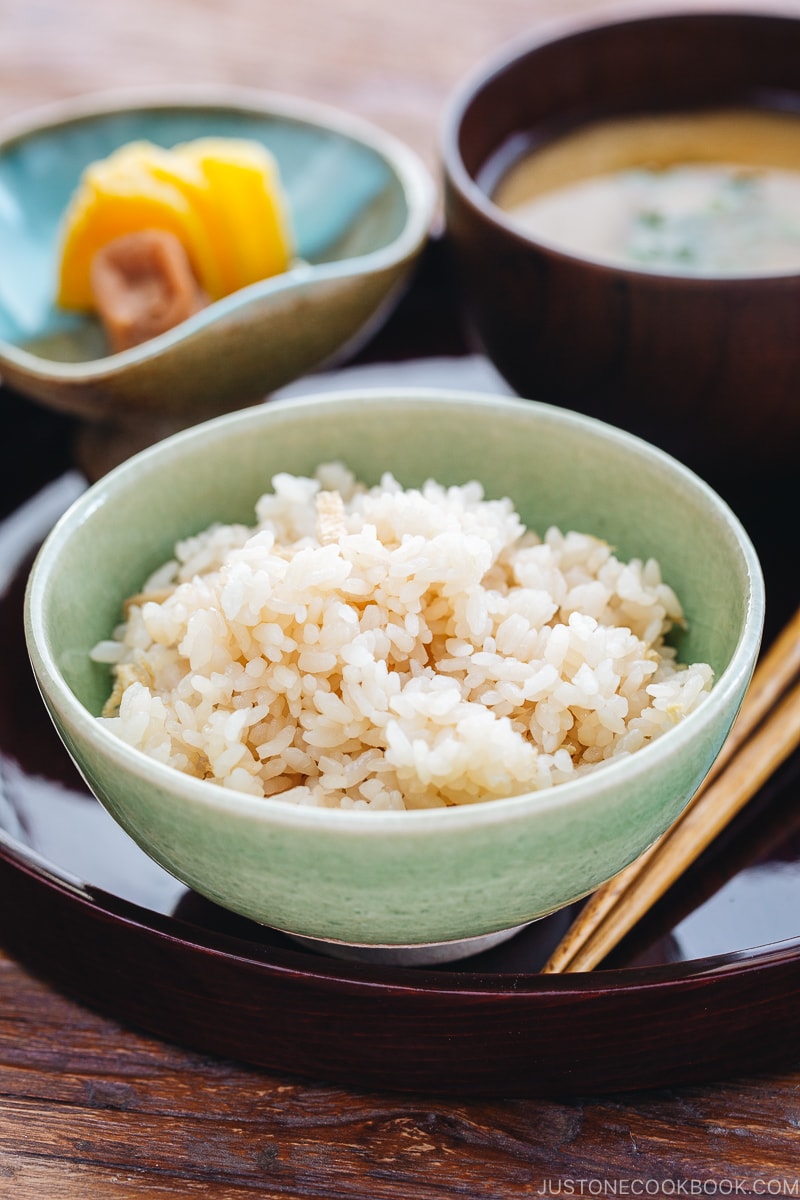
Have you seen young ginger (新生姜) in recipes before and wondered what it is? Compared to “regular” ginger, young ginger has thin skin and some parts may be a little bit pinkish. As young ginger is juicier and has a mild taste, it is often used in pickled ginger/sushi ginger (Gari ガリ in Japanese) or in this delicious Ginger Rice.
What is Young Ginger?
Young ginger is in season during the summertime, usually between June and August in Japan. Young ginger and regular ginger that you normally see in the grocery store are actually the same. When you leave the young ginger under certain conditions for about 2 months, it turns into regular ginger.
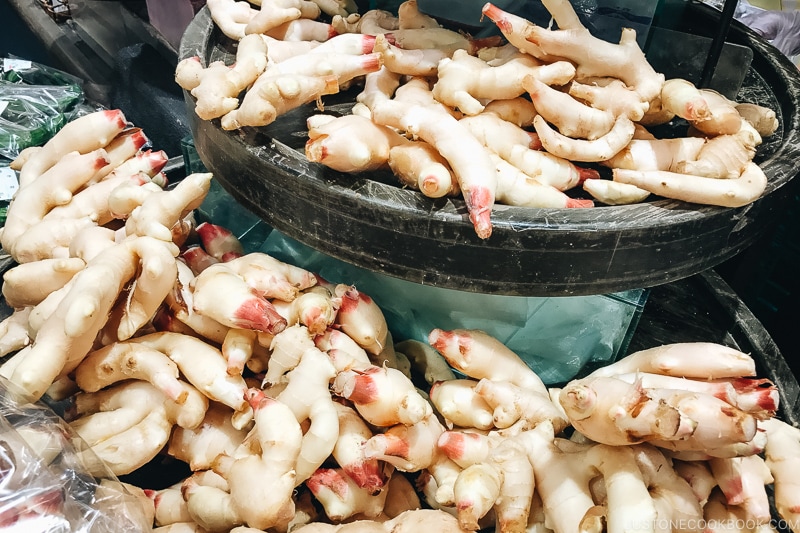
During this 2 month period, the pink color turns into a golden color and the skin gets hardened as it matures. The ginger can actually last close to 1 year if you can control the moisture and temperature.
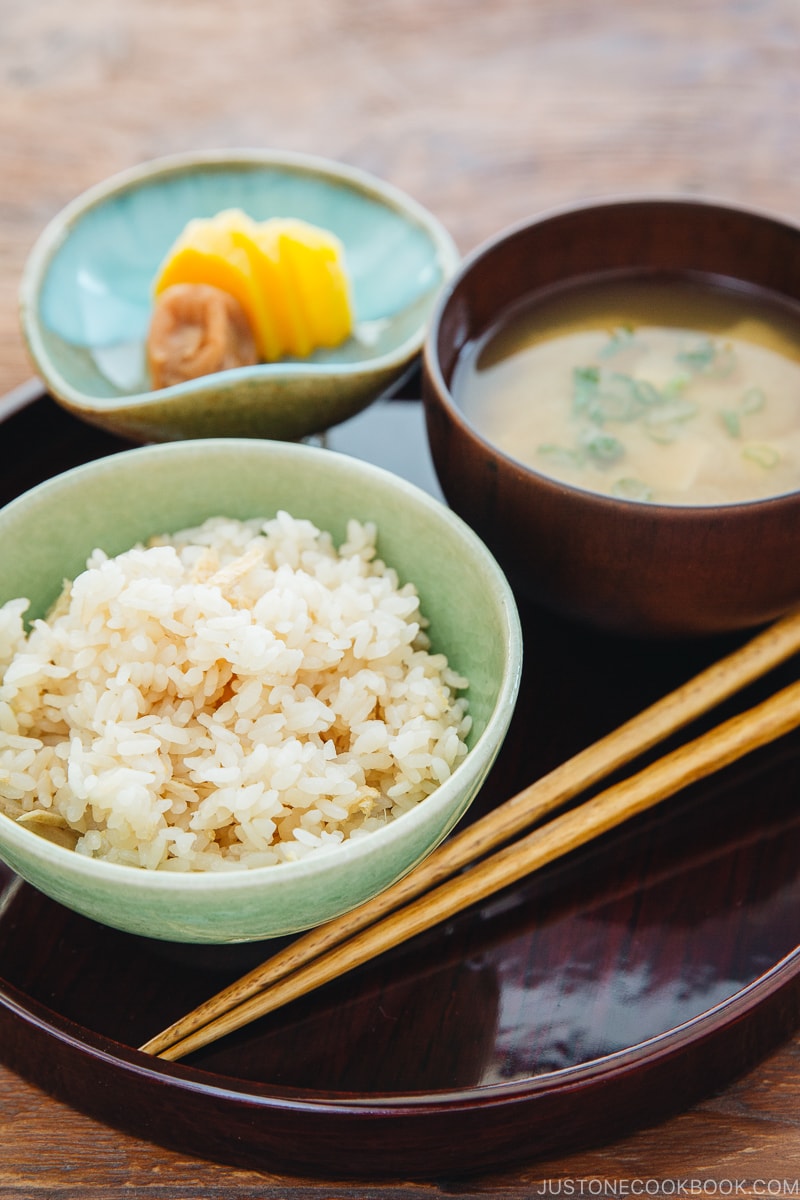
The Usage of Ginger in Recipes
Ginger adds a nice aroma, zest, and spicy kick to Asian cuisines. It tastes great with food, but it’s also very good for you and your body. Not only does ginger’s unique powers keep you warm, but it’s also an appetite stimulant and digestive aid. There are also other health benefits, and if you’re interested, continue reading here.
Young ginger can be found in Asian grocery stores during the summertime. If it’s out of season or you cannot find any, you can substitute it with regular ginger, as I did for this recipe. If you’re not a big fan of ginger, reduce the amount of ginger by 1/3 or half, especially if you’re not using young ginger. I use the same amount of ginger as young ginger and my family enjoyed it.
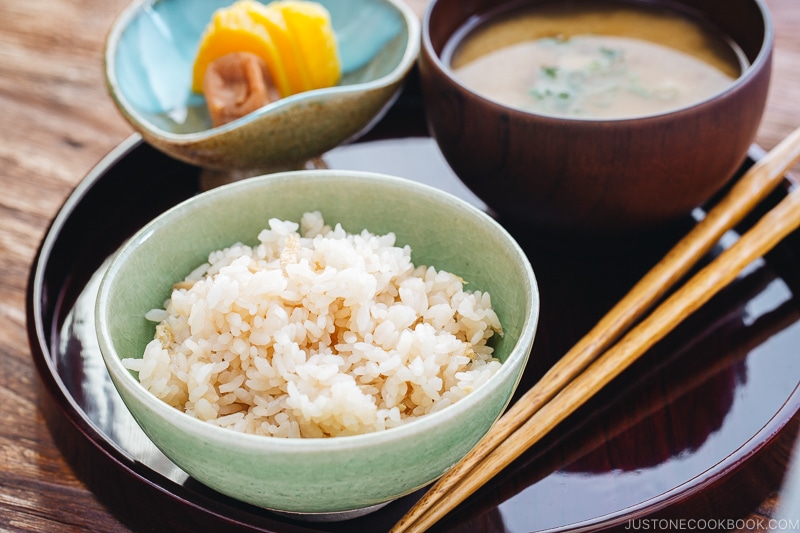
What Dish to Go with Ginger Rice
We recently ate Ginger Rice and Miso Salmon together and it was fantastic.
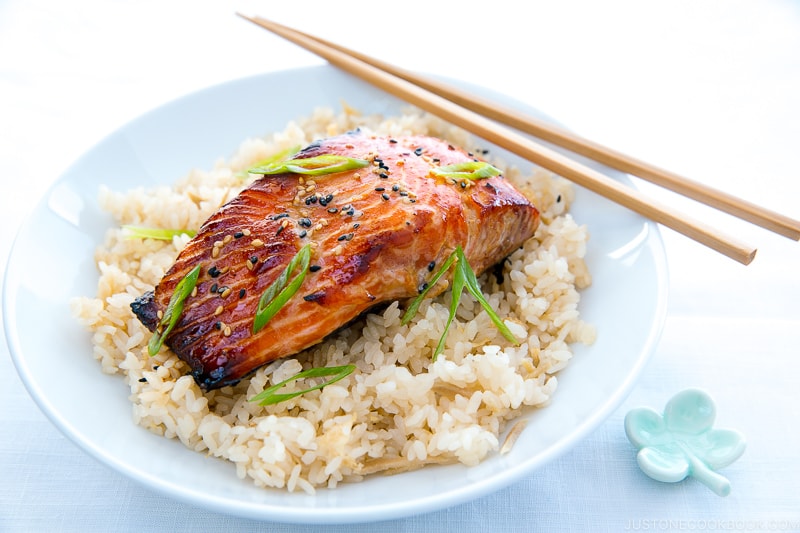
Wish to learn more about Japanese cooking? Sign up for our free newsletter to receive cooking tips & recipe updates! And stay in touch with me on Facebook, Pinterest, YouTube, and Instagram.
Ginger Rice
Ingredients
- 1½ cups uncooked Japanese short-grain white rice (2 rice cooker cups, 360 ml)
- 1 piece aburaage (deep-fried tofu pouch) (0.7 oz, 20 g; or substitute crispy fried tofu cubes from an Asian grocery store, blanched to remove excess oil)
- 2 inches ginger (preferably young ginger so it‘s less spicy; 1 oz or 30 g)
- 1⅓ cups water
For the Seasonings
- 1 Tbsp soy sauce
- 1 Tbsp sake
- 1 Tbsp mirin
- ¼ tsp Diamond Crystal kosher salt
Instructions
- Gather all the ingredients.
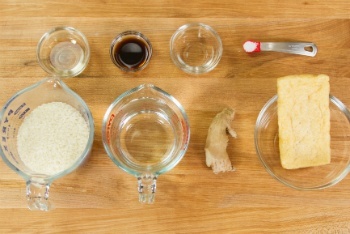
- Rinse 1½ cups uncooked Japanese short-grain white rice and drain well. For detailed instructions on rinsing and cooking Japanese rice, read my How to Make Rice post.

- Boil some water in a small saucepan and pour the boiling water onto 1 piece aburaage (deep-fried tofu pouch) set in a strainer in the sink. This step will rinse off the manufacturer’s oil and improve the flavor.
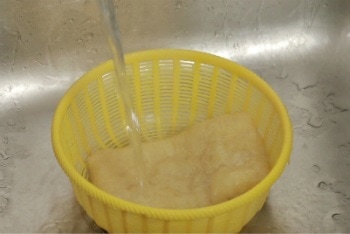
- Cut the aburaage in half lengthwise, then slice crosswise into thin strips.
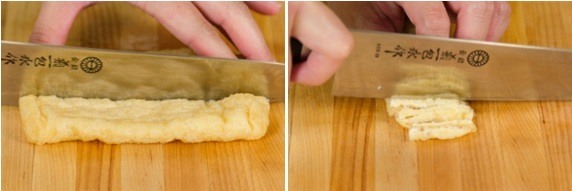
- Peel 2 inches ginger and cut it into julienned pieces.

- In a 2-cup measuring cup, mix all the ingredients for the seasonings: 1 Tbsp soy sauce, 1 Tbsp sake, 1 Tbsp mirin, and ¼ tsp Diamond Crystal kosher salt. Then, add 1⅓ cups water to the seasonings so that the liquid totals 1½ cups or 360 ml (equal volume as the rice).

To Soak and Cook the Rice
- Place the well-drained rice into the rice cooker. No rice cooker? You can also make rice in a pot over the stove, Instant Pot, or donabe. Pour the measured liquid into the rice cooker and mix well. Then, scatter the ginger and aburaage on top of the rice. Do not mix. The rice will not cook evenly if mixed with other ingredients.
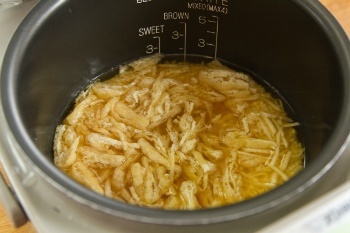
- Soak the rice for 20–30 minutes. Then, start cooking. Select the Mixed Rice option if you have it (see Notes below). When the rice cooker turns off, let the rice steam for another 10 minutes before opening the lid. Fluff the rice with a rice paddle and serve.
To Store
- You can keep the leftovers in an airtight container and store it n the freezer for up to a month.
Notes
Nutrition
Did you make this recipe?
Tag @justonecookbook on Instagram so we can see your delicious creation!


